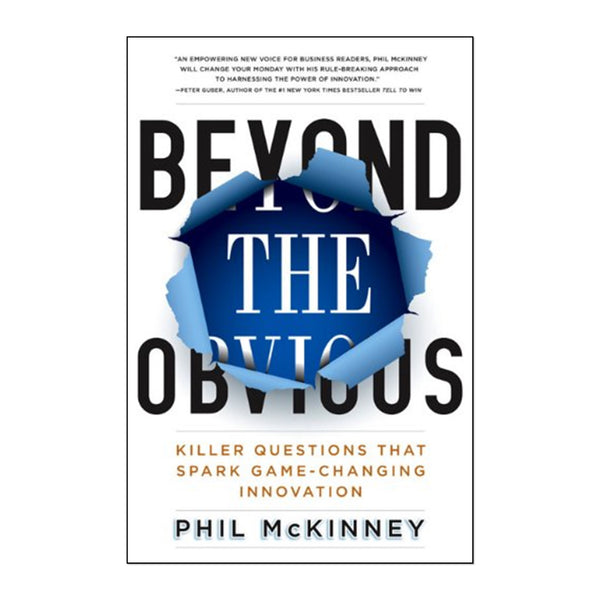What Are The Best Innovation Tools for Business?
There is no one answer to the question of what tools of innovation are best for generating disruptive business ideas. Different businesses will have different needs, and even within individual businesses, different departments or employees may need different tools depending on their specific tasks. However, there are some tools that are more commonly used than others, and that can be helpful for a wide range of businesses.
Some of the most popular tools of innovation include brainstorming tools, prototyping tools, and design thinking tools. Brainstorming tools can help employees come up with new ideas, prototyping tools can help them test and refine those ideas, and design thinking tools can help them put them into action.
If you're looking for tools of innovation that are specifically tailored to your industry or business, there are many options available. There are tools for inventors, tools for entrepreneurs, tools for marketing professionals, and tools for just about every other profession. You can also find tools that are specific to certain types of businesses, such as startups, small businesses, or multinational corporations.
What Is An Innovation Tool?
An innovation tool is a device, process, or application that improves productivity and efficiency. Innovation tools can come in the form of tools for inventors and tools for those who are developing a new product. There are also tools designed for businesses to help generate new ideas by letting employees collaborate digitally with ideation software. In recent years, there has also been a rise in tools for design thinking which helps individuals and teams to quickly create prototypes of their ideas.
The tools of innovation are important as they help to improve the way businesses operate. With so many different types of tools available, it's important to find the tools that fit your specific needs. Whether you're looking for tools to help you come up with new ideas or tools to help you bring those ideas to fruition, there are innovation tools available to help you succeed.
What Are The Benefits Of Innovation Tools?
When it comes to tools of innovation, businesses can benefit in a number of ways. Some of the primary benefits include:
1. Increased creativity and productivity.
The right tool helps to stimulate creativity and productivity, which can lead to greater output and improved results. Including creating disruptive innovation. Popular tools like creative thinking card decks can help stimulate this creativity.
2. Improved problem-solving.
They help to improve problem-solving skills by providing a mechanism for exploring new ideas and solutions.
3. Enhanced innovation.
Tools can help to create an environment where new ideas can flourish and be explored, which leads to greater innovation within the business.
4. Increased competitiveness.
Businesses that make use of tools of innovation are often more competitive than those that don't, as they are better equipped to face the challenges of the marketplace.
5. Better decision-making.
They can help to improve decision-making by providing a greater range of options and possibilities.
6. Greater innovation culture.
Tools can help to create a culture of innovation within the business, which can lead to greater success in the long run.
7. Improved communication.
They can improve communication by providing a common platform for sharing ideas and thoughts.
8. Increased team spirit.
Tools build team spirit by bringing people together around a common goal or purpose.
9. Greater creativity.
Innovation tools can help to unleash the creativity of individuals, which can lead to greater innovation within the business.
10. Enhanced learning.
The right tools facilitate learning and knowledge sharing, which can lead to a more knowledgeable and skilled workforce.
Most Successful Innovation Methodologies and Tools
There are a number of different tools of innovation that businesses can use to improve their creativity and productivity. Some of the most common tools include:
1. Brainstorming tools.
Brainstorming tools are a great way for businesses to come up with new ideas. By using tools like mind mapping tools and idea generation tools, businesses can get their employees to think outside the box (what we call box think) and come up with innovative solutions to problems.
Brainstorming tools can also help to improve communication within a business. By sharing ideas and thoughts on a common platform, businesses can improve team spirit and communication. This can lead to a more productive and creative work environment.
Brainstorming tools are also great for learning. By sharing ideas and working together to come up with solutions, employees can learn from each other and increase their knowledge base. This can lead to a more skilled and knowledgeable workforce.
Overall, brainstorming tools are a great way for businesses to improve creativity, communication, and teamwork. They can help to facilitate learning and knowledge sharing, which can lead to a more innovative and successful business.
2. Idea management tools.
Idea management tools are a great way for businesses to manage and track ideas. By using tools like idea boards and online tools such as Evernote, businesses can improve the flow of creativity and innovation.
Idea management tools are also great for learning. By tracking and managing ideas using enterprise innovation management software, employees can learn from each other and increase their knowledge base. This can lead to a more skilled and knowledgeable workforce.
Overall, idea management tools are a great way for businesses to improve creativity, communication, and teamwork. They can help to facilitate learning and knowledge sharing, which can lead to a more innovative and successful business.
3. Collaboration tools.
A business should use collaboration tools to help bring people together to work on projects and ideas. Online tools such as Google Docs are a popular way to collaborate, but tools such as whiteboards and flip charts can also be effective. Collaboration tools help to get everyone on the same page and help to move projects forward. They can also improve communication and help to build relationships. When everyone is able to work together, it can lead to better ideas and a more successful business.
4. Problem-solving tools.
Problem-solving tools come in all shapes and sizes, but they all have the same goal: to help you find new solutions to your problems. There are a variety of tools available, each with its own strengths and weaknesses, so it's important to choose the tools that will work best for you.
Decision-making tools can help you make better decisions by weighing the pros and cons of different options. Root cause analysis tools can help you identify the root causes of problems and find solutions.
The innovation methodology you use will depend on your business, innovation goals, and how your business decides to manage innovation.
What Are Strategic Innovation Tools?
A strategic innovation tool is a method or process used to create and execute a strategy. It can assess opportunities and threats, develop new products or services, and create winning strategies. There are many different tools available, and each one has its own strengths and weaknesses. It's important to choose the tools that will work best for your business.
Some of the most popular tools include SWOT analysis, business model analysis, and innovation tools. Each of these tools can help you achieve your strategic goals and create a successful business strategy.
What Innovation Techniques Should Businesses Consider?
When it comes to tools of innovation, businesses should consider using techniques that will allow for creativity and new ideas. There are a few different techniques that businesses can consider when it comes to tools of innovation.
1. Divergent Thinking.
Divergent thinking is all about coming up with new ideas and possibilities. This type of thinking is often used in brainstorming sessions, where a group of people get together and come up with as many ideas as possible.
This can be a great way for businesses to come up with new product or service ideas. However, it’s important to remember that not all of these ideas will be good ones. In fact, most of them will likely be bad ideas, but that’s okay. It’s the process of coming up with them that’s important.
2. Convergent Thinking.
Convergent thinking is all about narrowing down options and choosing the best solution. This type of thinking is often used in decision-making processes.
Businesses can use convergent thinking to come up with new product or service ideas. By narrowing down a list of potential solutions, businesses can focus on the best ones and move forward with development.
However, it’s important to remember that not all ideas will be good ones. In fact, most of them will likely be bad ideas, but that’s okay. It’s the process of coming up with them that’s important. By using convergent thinking, businesses can focus on the best ideas and move forward with development.
3. Analytical Thinking.
Analytical thinking is all about breaking a problem down into smaller parts so that it can be solved. This type of thinking is often used in problem-solving processes.
Businesses can use analytical thinking to break down a problem into smaller parts and then solve it. By doing this, businesses can come up with new product or service ideas. By breaking down a problem, businesses can focus on the smaller parts and come up with a solution.
This type of thinking can also be used to improve processes. By understanding how a process works, businesses can find ways to make it more efficient. This can help businesses save time and money.
Analytical thinking is an important tool for business innovation. By using analytical thinking, businesses can come up with new product or service ideas and improve processes. Analytical thinking can help businesses solve problems and improve efficiency.
Idea Management Tool
An idea management tool is a software application that allows businesses to capture, track, and manage ideas. This type of tool can be used to generate new ideas, track customer feedback, and improve process efficiency by establishing an idea management process.
There are a few different types of idea management tools available. Some tools allow businesses to capture ideas by recording them in a central location. Employees, customers, or partners can use these types of digital tools. Other tools allow businesses to track customer feedback and ideas. These tools can be used to see what customers are saying about a business and to track the popularity of ideas. Finally, there are tools that allow businesses to improve process efficiency. These tools can help businesses track how ideas are being implemented and find ways to improve the process.
They are an important part of business innovation. By using digital tools, businesses can capture, track, and manage ideas. This type of tool can help businesses come up with new ideas, track customer feedback, and improve process efficiency. There are a variety of idea management tools available, so businesses can find one that best meets their needs.
Innovation Process For Business
Innovation is key to the success of any business. While there are many tools and processes that can be used in order to foster innovation, the following six-step process is a good place to start. This process can be adapted to fit the specific needs of your business.
1. Idea generation.
This step involves generating new ideas for products, services, or process improvements. This can be done through brainstorming, customer feedback, or simply observing what's happening in the market. Once you have some new business ideas, it's important to evaluate them and see which ones might have the most potential.
2. Idea screening.
This step involves evaluating and sorting through the ideas generated in step 1. Only the best ideas will move on to the next step. One popular way to evaluate new ideas is through a concept called the "5 Whys." This involves asking yourself why a particular idea is important, and then drilling down into the answers until you reach a basic need or problem that the
3. Concept development:
This step involves developing a rough idea of what the new product, service, or process would look like. This includes figuring out how it would work and what features it would have. It's important to be realistic in this step and not get carried away with the possibilities.
4. Prototype development.
This step involves creating a prototype of the new product, service, or process. This can help to test out the feasibility of the concept and get feedback from potential customers.
5. Testing and evaluation.
This step involves testing the new product, service, or process with real customers to see how they like it. It's important to collect feedback during this step so that the idea can be further refined or scrapped altogether.
6. Launch.
Once the new product, service, or process has been refined based on feedback from testing and evaluation, it's ready for launch. This can involve marketing the new product, setting up a sales process, or simply making it available to customers.
Results From Business Innovation Tools
Each type of innovation tool has its own benefits and challenges. The following are some key results that can be achieved by using various tools of innovation in a business setting:
1. New Products.
A new product is typically created through the process of invention, which is the combination of ideas, knowledge, and tools that are used to create something new. When a company uses tools such as research and development, design thinking, and prototyping, they can increase the chances of successfully inventing a new product.
2. New Services.
Just like with products, companies can create new services by using tools of innovation. This might involve using methods such as customer segmentation and needs assessment to identify areas where new services can be offered. Additionally, tools such as market research and competitor analysis can help businesses understand what services are already being offered and how they can differentiate their own services.
3. Business Model Innovation.
A business model is an overall plan for how a company will generate revenue and make a profit. When a company uses tools of innovation to create a new business model, they are essentially creating a new way of doing business. This can involve things such as developing new pricing models, revising the sales process, or creating new partnerships.
4. Process Innovation.
Process innovation is the implementation of new methods or procedures within a company. This can involve tools such as process redesign, Six Sigma, and Lean Startup. By using these tools, businesses can make their operations more efficient and effective.
5. Organizational Innovation.
Organizational innovation refers to changes that are made to the way a company is structured or operated. This might involve the use of tools such as business process re-engineering, Total Quality Management, and change management. When a company uses tools of innovation to create organizational change, they are able to make their business more agile and responsive to the ever-changing needs of the market.
While each type of innovation tool has its own benefits and challenges, using them collectively can help a business achieve great success. By using a variety of tools, businesses can increase their chances of coming up with new products, services, business models, processes, and organizational structures. This can help them stay ahead of the competition and stay relevant in today’s ever-changing marketplace.
Tools To Build A Scalable Innovation Management Process
The tools of innovation are essential for businesses of all sizes to create new products, services, and processes. However, using these tools effectively can be a daunting task. That’s where scalable innovation management comes in.
Scalable innovation management is a process that allows businesses to manage their innovation initiatives effectively and efficiently.
The key to using scalable innovation management effectively is to start small and gradually increase the scope of the project. This allows businesses to test their ideas and determine if they are viable. If they are, then they can expand the project to include more people and resources.
The scalability of the innovation management process makes it a great option for businesses of all sizes. By using this process, businesses can increase their chances of success by leveraging the expertise of others and gradually increasing the scope of their projects. So, what are you waiting for? Start using scalable innovation management to create new products, services, and processes. By doing so, you can increase your chances of success in today’s competitive marketplace.
No Innovation Excuses Allowed
While many think that only large organizations with significant resources can dedicate the resources to innovate, this could not be further from the truth. Tools of innovation are available to anyone with an idea and the will to bring it to market. In today’s digital age, tools such as online video tools, social media, and crowdfunding platforms make it easier than ever for businesses of all sizes to get their ideas in front of potential customers. So, don’t be afraid to execute your idea because you think you don’t have the resources. The tools are there for you to use, and with a bit of hard work and determination, you can succeed.
If you are still hesitant, then consider leveraging the expertise of an innovation agency that can help you bring your idea to fruition. Either way, don’t let excuses impede your innovation potential.
So, what are you waiting for? Start using tools of innovation to create new products, services, business models, processes, and organizational structures. By doing so, you can increase your chances of success in today’s competitive marketplace.
Innovation.Tools
Innovation.Tools is your source for the latest tools of innovation. We provide in-depth information on the tools of innovation and how they can create new products, services, and processes. So, what are you waiting for? Start using innovation tools to increase your chances of success in today’s competitive marketplace.
Looking For An Innovation Agency?
Check out Techtrend. They are a full-service innovation agency that supports its clients in creating strategic innovations, technologies, and award-winning products that our clients’ customers love.
They share the tools and methodologies they use. A half-billion people use the products and services that've been involved with.





